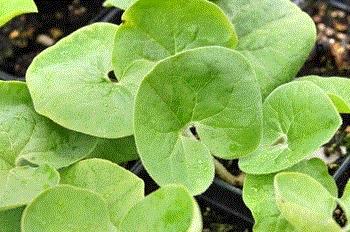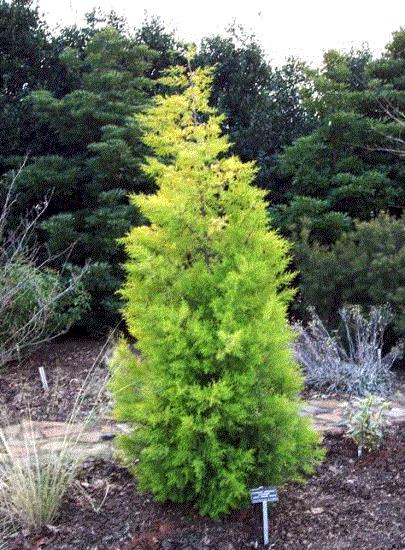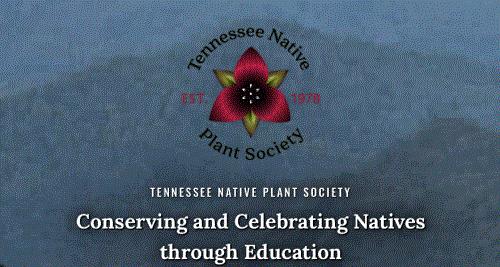A Reminder on Trucking Regulations
Happy Daylight Savings time to everyone, when my kids start staying up to midnight because I have them pulling weeds 'til dark. Life on ChapStick Farms (this is a purely fictional name) is tough when you’re a kiddo, but at least I don’t make them eat worms and they get to take a bath once a week.
Speaking of eating worms, I know more than a few shippers who feel like they have dirt in their mouth recently. With spring shipping season going from 25 MPH to infinity in the last couple of weeks, I've been hearing a lot of folks running into “interpretation of new regulations” trouble. It’s to be expected, somewhat, even if it is frustrating.

In addition to ensuring your drivers have the proper documentation, also make sure they know that "The Blues Brothers" is not a driver-training video …
In one such case, AmericanHort’s Craig Regelbrugge relayed a report of a truck being pulled over in Maryland and cited with a safety violation for transporting greenhouse plants as agricultural commodities under the ag exemption. Since the rules were just clarified in December 2020 to embrace nursery and floriculture, there could be more incidents like this in the near term. It often takes time for rule-change guidance to make its way to employees on the enforcement front lines.
You can protect yourself and your plant shipments by having your drivers or haulers carry a copy of the current regulations printed out and available for enforcement officials. You can find those regulations in the Federal Register—Agricultural Commodity.

Speaking of Training ... and Weather
In a La Niña year that's transitioning to a neutral phase in the Pacific (as the experts say we're doing now), the weather is generally cooler in the west and warmer in the east, with a battleground in between. We’ve surely been seeing that recently, which kicked off back in the Texas/Oklahoma/Arkansas/Louisiana/Mississippi deep freeze and continued into the tornado outbreaks of the last two weeks.
The latter is especially concerning when you’re working outside as part of a landscape crew, on a container yard or in a greenhouse. Every year, I see a facility get clobbered by a tornado or derecho and am constantly amazed more workers aren't seriously injured or killed. I even saw my life flash before my eyes back in August 1993 when working at Boulevard Flowers in Colonial Heights a tornado that moved just southeast of the business sent lumber raining down around us. Talk about a pucker-up moment …

Pictured here is a lumber yard in Petersburg, Virginia, that was hit by a tornado on August 1993 and deposited this lumber along a 5-mile long and 2-mile wide path, which included Boulevard Flowers in Colonial Heights.
The moral of this story is to have an emergency plan in place and have a facility where all workers can shelter in place. Allow landscape crews to have ample warning to pack up and haul grass out of a storm’s path. Then have a plan in place for what to do after a storm (that causes significant damage) passes. How do you conduct a roll-call to ensure all employees are okay? Who cuts the power/water? Who secures sensitive documents?
You get the point—now do something about it. An ounce of prevention can make a world of difference.

Wild Ginger
Asarum canadence, also called Canadian wild ginger, is a unique perennial that really pops when used as an understory species under a deciduous tree canopy or on the north/east sides of a home. In my book, its claims to fame are that it creates a nice, layered texture under shade trees and it’s deer tolerant (nothing is deer resistant if the population is high enough).

Native to Zones 3 to 7, it also works well in the north-central and northeastern U.S., where deer populations continue to explode and where deer-tolerant plant material is desperately needed. Having a height of 6 to 12 in. and nearly evergreen foliage (unless it gets ridiculously cold with no snow cover), it does spread, so give it some space when planting it. Also, make sure to put it in a place with consistent soil moisture and some organic matter in the soil.
Once established, which can take some time and gives it a bad rap sometimes, it’s quite tough. It’s also making a comeback in the culinary world because environmentally conscious chefs seem to be shying away from intensively farmed tropical ginger, which is what we typically use in cooking across the globe.

The Philly Flower Show—Game on
It doesn’t get more iconic than the Philadelphia Flower Show, especially considering it’s the world’s longest-running flower show. And if you were looking for some good news, the show has it in spades. The Pennsylvania Horticultural Society (PHS) recently announced it's game on and released a full schedule of its 2021 Philadelphia Flower Show, “Habitat: Nature’s Masterpiece.”
The Show has been re-imagined to allow for a new, safe experience in a historic Philadelphia park to embrace the beauty and horticultural inspiration that guests have experienced for 193 years.

The show’s dates are June 5 - 13, 2021, taking advantage of FDR Park’s inspiring natural beauty and expansive outdoor location. That’s right, folks, the show is going outside to avoid germs and improve your mood via light therapy.
Designed by Frederick Law Olmsted—one of the designers of New York City’s famed Central Park—FDR park was the host location for the 1926 Sesquicentennial Expo of the United States. FDR Park is an inspiring venue that contributes to the splendor that the Flower Show is known for, while also being easily accessible by public transportation and car.
In its new location, the Show will span 15 acres of the Park’s footprint, expanding in size to nearly 450,000 sq. ft. of exhibits, activities and open space, a 45% increase from previous Flower Shows held inside the Philadelphia Convention Center.
“The 2021 Flower Show will inspire and bring joy to our visitors and provide gardeners with a wonderful highlight to the growing season,” said Sam Lemheney, PHS Chief of Shows & Events.
Each visitor who purchases a ticket, attends a Flower Show special event or becomes a PHS member allows PHS to further its work planting trees, supporting neighborhood greening, establishing community gardens, providing job training, managing public gardens, and connecting people with horticulture and one another. Full details for the 2021 Philadelphia Flower Show can be found at: www.phsonline.org/the-flower-show.

Tech On Demand: Level Up Your Value Proposition
For those who haven't caught a Tech On Demand podcast, it’s certainly something worth checking out. Being asynchronous (you can watch it recorded instead of live), it’s a lot more convenient, too.
In the latest episode of Tech On Demand, brought to you by GrowerTalks, host Bill Calkins is once again joined by Bryce Anderson, sales manager for The HC Companies. Bryce is a 28-year industry vet with experience in a wide range of roles, from greenhouse production and distribution to retail and even manufacturing. He’s been a head grower and production manager, as well as garden center manager. He also brings experience in sales and operation management. He says his skills have evolved over the years to include water, media, nutrition management and he has a particular focus on crop quality. That wide range of skills and experience should make this discussion particularly interesting—"Product Differentiation is Critical to Your Value Proposition."

Following up on the previous episode focused on pricing, Bryce and Bill spend some time on ways and reasons to differentiate. They begin by highlighting how critical it is for growers to move toward product uniqueness and away from falling into the commodity trap. Bryce shares his perspectives on how to navigate a marketplace of choices and find products that are truly different. He spends time on the costs required to create difference, but even more time on the cost not to differentiate.
They kick around the question if differentiation strategies should fall on the grower or retailer (or both). And Bryce wraps up the podcast with final thoughts on creative ways to elevate a product mix and grab attention as a wholesale grower. This is a fantastic discussion of a very important topic. Throw in your earbuds and open your mind to some fresh thinking.
Direct link to the episode: techondemand.podbean.com/e/level-up-your-value-proposition.
Subscribe to Tech On Demand on all major podcast apps like iTunes, Google, Spotify, Stitcher and more so you never miss an episode. Find all episodes at growertalks.com/TechOnDemand.

Arizona Cypress Limelight
Chalk this one up as something I have yet to get my hands on, but really, really want. Cupressus arizonica Limelight is a relatively new introduction and is far superior to other chartreuse-to-lime-colored cultivars on the market.
It’s also got an interesting history, originating as a sport on a plant in … Australia back in the mid 1980s. From there, it took about 20 years to make it back into the U.S. and another 10 to get into the trade (a little). That “a little” comment means you won’t find it widely yet, but if you’re in Zones 6 to 9, or along the west coast inside the coastal range, start looking for it.
If you see two, buy me one and I'll come pick it up. Especially if you’re in Monterey and have a guest room.

Photo courtesy of the J.C. Raulston Arboretum.
Like most Arizona cypress, it tolerates a very wide variety of soil conditions, from slightly alkaline to pretty acidic (in the low 5s). One thing it doesn’t tolerate is wet soils, so avoid that, and for the most vibrant color put it in full sun.
Finally, if planting en masse, then be sure to properly space to account for its mature size of 35- to 40-ft. tall by 25- to 30-ft wide. Planting too close can lead to canker issues, which is pretty much the only serious problem that the tree faces (and is limited to more humid regions).
Arizona cypress is hands down my favorite everyday conifer and I can’t wait to see this cultivar in garden centers across the nation.

Native Plant Seminars for 2021
There are a lot of Native Plant Associations around, but I’d say the Tennessee Native Plant Society is as active as any in the U.S. and seriously into educating the public. Hence, the killer seminar lineup they have proposed for 2021. And if you’re not from Tennessee, who cares? Tennessee is in that mid-latitude area that has a huge diversity of species with ranges that, in some cases, span the entirety of North America. Also, many of the seminars aren't Tennessee-centric, so give it a shot … I bet you’ll be impressed.

Speakers are drawn from their most knowledgeable membership, from professionals across the state, and from the professors and students studying Tennessee native plants. A range of topics will be covered that may include plants that are currently blooming, native plants in your yards, current research on native plants, protections for native plants, and so much more.
Presenters:
-
March 16: Dennis Horn, Spring Wildflowers Across Tennessee
-
April 20: Dr. Larry Pounds, Plants of the Cumberland Trail
-
May 18: Milo Pyne, Native Plants of the Cedar Glades
-
June 15: Cooper Breeden, Tennessee Plant Conservation Alliance
-
July 20: Meredith Clebsch, Native Plant Propagation
-
August 17: Bart Jones, Pollination Strategies of Native Orchids
-
September 21: Pandy Upchurch, Edible Natives
-
October 19: TBA
-
November 16: Margie Hunter, Invasive Plants of Tennessee
-
January 18: Dave Walters and Dr. Cindi Smith-Walters, Winter Plant Identification
There's no pre-registration required and no cost to attend—and I like that! You can find more info on the series here: www.tnps.org/wp-content/uploads/2021/03/2021Seminars.pdf.

Our Wacky Wonderful World—Notes from the Edge of Sanity
A reader may think that after going on five years and 115 newsletters, I would be out of goofy ideas and oddball opinions. To make such an assumption would seem logical and yet the ideas keep coming. That’s what makes writing this newsletter so fun.
Case in point, last night while staying up late to keep an eye on tornadic storms near my home, I went down the rabbit hole of investigating the "Everything-as-a-Service" concept. Have you heard of it? If not, you need to seriously look into it—especially if you own a business or are thinking of starting a business.
To keep it simple for now, most of you know of “the Cloud.” Most folks start using the Cloud as an information storage hub or online hard drive of sorts. But the Cloud is much, MUCH more than an online self-storage space. In fact, the Cloud is an arena whereby just about any computing can be done, and in many cases, quicker than with a fixed computer (in an office) and utilizing an array of free or very low-cost software.
Now, I realize that most of us wouldn’t know where to begin here, but I wanted you to understand the concept of "Everything-as-a-Service." The best way would be using a concept I use in teaching my undergraduates about business models.
So what’s an inexpensive horticultural business you can start? Think about it for a bit before continuing …
I’ll tell you what I use as an example in my undergraduate class at the University of Georgia … and that's an online container plant rehab service. Now, you may be thinking that, as the owner, I would go out and pick up dying plants and bring them back to my greenhouse to rehab. Well, you’d be dead wrong. What I would do is set up the online service on the Internet (of things) and use a distribution network software on the Cloud (think Uber for plants) whereby I would contract with retail garden centers and ornamental growers around the U.S. Those local retail outfits or growers would do the picking up and rehab of plants, and I would pay them 75% of the cost of rehab services booked on my website. So, on a $20 rehab job, the retailer or grower would get $15 and I would get $5 bucks—for essentially being a rehab matchmaker.
And that, my friends and readers, is the central theme of "Everything-as-a-Service." The Cloud serves as a means of offering a service (it provides the menu of services, pricing, scheduling and payment options), but at low to no cost to the entrepreneur. In my case above, if I got 10,000 people in the Atlanta market to agree to this service (not unreasonable with a population of 7 million), the gross revenue would be $250,000. For my matchmaking services and developing a website, I would walk away with $50,000. Not too shabby …
I will say that the whole concept of Everything-as-a-Service is more complicated than this, but I hope it opens your mind to the possibilities and makes you start looking into how you can take advantage of it to work smarter and not harder. After all, my grandpa always said it’s a lot more fulfilling to watch someone else work while I’m fishing.

Live authentic,

Matthew Chappell
Editor-at-Large
Nursery & Landscape Insider
This has been received by 28,012 of the hardest-working horticulturists in show business!
If you're interested in reaching 28,012 clients who eagerly await every Nursery & Landscape Insider and surely read every word, contact Kim Brown ASAP and she'll hook you up.